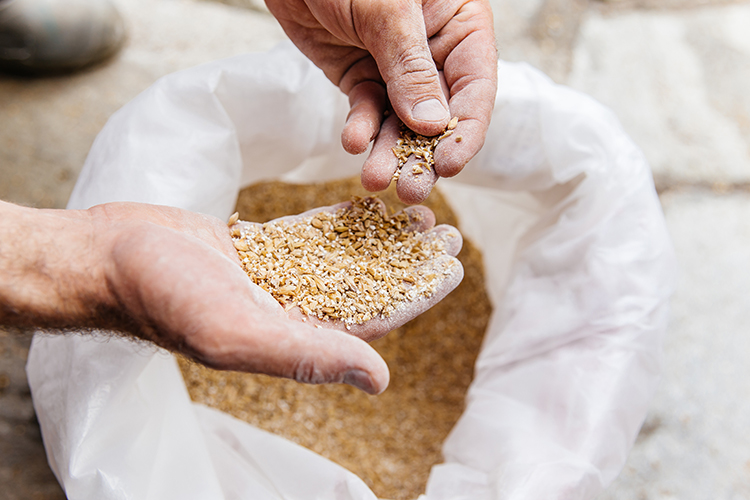
Brewers grains and distillers grains are two examples of waste products humans would need to dispose of that cows can transform into nutrient-dense milk and meat. The co-products of beer brewing and ethanol production, respectively, brewers and distillers grains can become valuable parts of a dairy ration when used appropriately. Dried forms are often incorporated into manufactured grain mixes, while wet versions can also be useful on farms.
Both ingredients provide a source of protein, fiber, and energy to complement a farm’s forages, described dairy nutrition professor emeritus Larry Chase in a Cornell University Pro-Dairy factsheet. “The protein in these feeds is high in rumen undegradable protein (RUP), which provides amino acids directly in the small intestine,” Chase explained, noting that the grains are also low in soluble protein. As for fiber, wet brewers and wet distillers grains offer a highly digestible form. The energy value of these products can be 85% to 95% of that of corn grain, Chase said.
Further, potassium level is low, which can be useful for dry cow diets. Given these nutritional benefits, the price for these ingredients typically makes them a good buy, he described. Wisconsin research has suggested a feeding rate of 20 to 40 pounds of wet brewers grain on an as-fed basis. For wet distillers grain, Chase suggested a practical guideline of 10% to 15% of total ration dry matter.
Due to their moisture content, wet brewers and distillers grains have a short shelf life before spoilage and mold growth occurs. In cooler weather, this may be five to 10 days, but in heat and humidity, it may only be two to four days, Chase cautioned.
If daily use of the ingredients is not sufficient to utilize each load in this time frame, a few measures can be used to prevent spoilage. Chase shared that research from the University of New Hampshire found that mixing salt into brewers grain can delay mold growth. Microbial and acid-based preservatives may also be available to improve shelf life. However, since these methods require additional cost and mixing equipment, a farm may opt to cover the feed with a plastic tarp. For longer term storage, a silage bag can be useful.
In any scenario, Chase advised storing the wet feeds in a three-walled concrete structure in order to prevent potential runoff or leachate. The nutrient composition of these feeds means a breach could lead to contamination of surface or groundwater, he said.
When stored, fed, and sourced appropriately and efficiently, brewers and distillers grains can be useful additions to a dairy ration that reduce the need for disposing of more human co-products. Chase added that Cornell research has shown that less carbon dioxide is released to the environment when co-products are fed to animals than when they must be incinerated.








